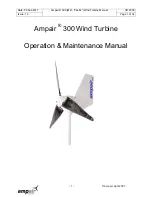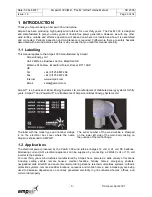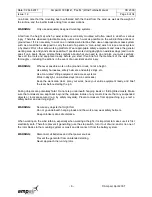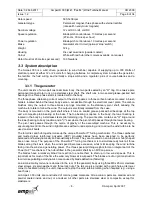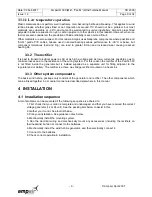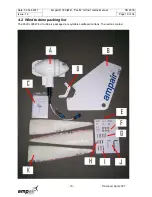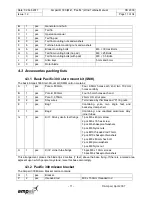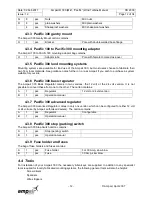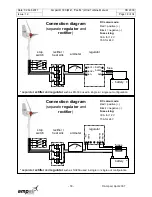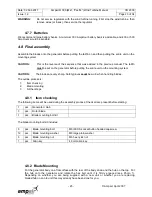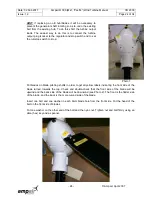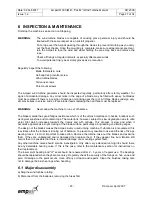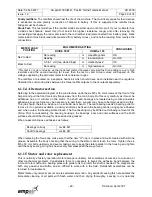
Date: 02 Feb 2011
Ampair ® 300 (Mk1, “Pacific”) Wind Turbine Manual
CD 2300
Issue: 1.2
Page 15 of 34
- 15 -
© Ampair, April 2007
On a small boat space is at a premium and so the aim should be to get the wind turbine high up, away
from people on the busy deck. This has the advantage of placing the turbine up where the wind is
stronger, but has the disadvantage of adding top weight. Mast tops are generally the most congested
location on a boat and so these are seldom utilised as a mounting location, irrespective of top weight
considerations. On ketches (other than junk rigged ones) the mizzen mast provides a good location, but
for sloops stern pole mounts or stern gantry mounts are more typical compromises. The advantage of a
stern pole is that it can be de-rigged fairly easy (e.g. to put a boat into racing trim for a season) whereas
gantries are for committed cruisers and will also typically be designed as tender davits, aerial mounts, and
solar panel mounts.
Very careful attention must be given to the strength and integrity of the mounting. This should be capable
of withstanding a peak horizontal load of 140 kg (300 lbs). Bear in mind that the blades will flex slightly in
extreme weather conditions and so sufficient clearance must be left for this. The mounting should not rest
on a resonant surface such as the centre of a cabin roof since this may transmit any vibration making the
machine audible inside.
WARNING:
The mounting pole should be vertical.
The space between the blade tips and the mounting pole must be left clear, i.e. no
clamps or other items should diminish this clearance.
The pole base should be mounted where the structure is very rigid
4.5.4 Mechanical installation of Pacific 300 stern mount kit
a) Check. Ensure that a complete and undamaged set of parts has been received.
b) Pole position. The pole base fixing may be moved to one side provided that, when viewed from above,
the angle between the strut and either wire is greater than 45 degrees.
c) Pole assembly. Using the joiner tubes and M6 x 10mm screws and shake-proof washers, assemble the
poles so that pole A (holes in the middle) is the top pole, pole B (no holes in the middle) is the middle pole
and the Ampair pole becomes the bottom pole (two holes only at one end for fixing the feet).
A thread locking solution (e.g. Loctite 641) will stop screws shaking loose due to long term vibration. It
may be easier to feed the cable through the poles as they are assembled.
d) Feet. Using the M8 x 60mm bolt, washers and nut, fix the feet to the pole end and screw down the feet.
The feet should be arranged so the pole can pivot in line with the strut. This usually means aligned fore
and aft unless the pole is off-centre.
e) Stay Wires. Having assembled the poles with joiner tubes, site the pole and attach the two stay wires
with the yoke in place on the pole. Find suitable points for the stay wire base fixings, allowing for the fact
that these will be under considerable tension in use. "Bottle screws" are suggested as a tensioning
method.
f) Backstay strut. File the groove in the strut pole end and clamp shell to accommodate the backstay wire
diameter less 0.5mm. Cut the strut pole to length required. Drill the hole for the strut to yoke bolt in situ to
ensure correct orientation of holes. Ideally the strut should form a right angle with the backstay.

